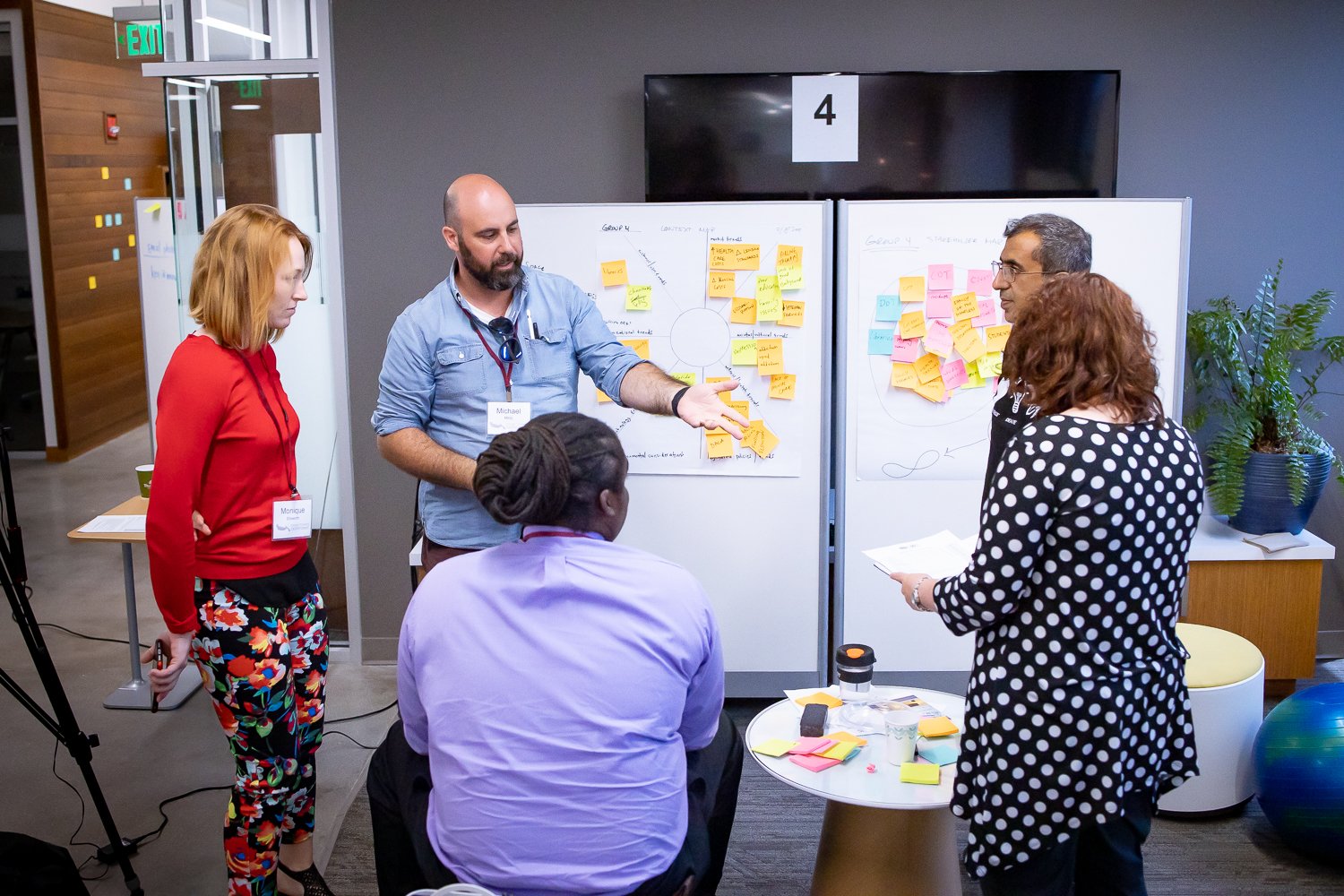
Scientific Innovation Strategies:
Design Sprint
Plan
HOW MIGHT WE?
In his book, A More Beautiful Question, Warren Berger argues that questions are more important than answers. “Questioning is a skill and a way of thinking; it is our ability to “organize our thinking around what we don’t know.”
“A beautiful question is an ambitious yet actionable question that can begin to shift the way we perceive or think about something—and that might serve as a catalyst to bring about change.”
A design challenge question should be intentionally ambitious, yet still achievable.
Given that
(state problem)
How might we help
(person or group experiencing the problem)
HMW
OBSERVATION:
QUESTION:
achieve
(specific short term goal)
so that
(generic long term goal)
Have each team member generate 1-3 HMWs to share with the team. After sharing, pick the top 3 to refine if needed. Then vote on a single HMW you want to pursue as a team.
If you have a large number of HMWs and can’t pick top three, you may want to utilize sticker voting. For example, if the team of 5 has generated 10 HMWs, give each person two votes. Each person leaves a “vote” by placing an emoji “sticker” on that HMW. The HMW with the most emojis can be selected to move forward.
This intentional question will help you focus your efforts for the design sprint.
Ask the right question.
TEAM SETUP
Diversity drives innovation.
The Team. Representation from many different skillsets is essential for problem solving. Make sure that you have everyone you need, but no excess. Teams are typically best kept small: 5-8 people.
In this class we will balance total number of teams with the number of members per team, and area of expertise will be the driving factor. In a company or large organization, you should seek experts from many functional areas. For example, a team tackling hospital acquired infections might include a surgeon, infection control personnel, a nurse, a business administrator, and even the night shift custodian.
The Decider. In Jake Knapp’s book Sprint, he emphasizes the importance of including the Decider in the sprint. The Decider is the person with decision-making authority within your company or organization, and often they also have the power to clear the team’s schedules to focus on a sprint. They also have the power (and funds) to give a green light for potential solutions, and they represent the company values and trajectory. If they aren’t looped into your sprint, they could quash solutions and prevent forward progress.
It’s often true that Deciders have busy schedules and might not understand the value of fast-paced design sprints. If the design sprint team wants to innovate and produce a solution to present to upper leaders, pick 1-2 Deciders to attend parts of the design thinking process to get their input at key points throughout. For example, early in the design thinking process, during the empathy phase, involve the Decider in understanding the problem and get input about choosing what part of the problem to focus on.
Keep in mind that new perspectives spark new ideas. You may want to include design thinking team members outside your organization (definitely outside your department!)
Diversity of organizational tenure and functional backgrounds influences innovation and ultimately boosts business outcomes (de Vaan et al, 2015).
Gender diversity leads to better science. (Nielsen et al, 2017).
Historically underrepresented groups often draw relations between ideas and concepts that have been traditionally missed or ignored. (Hofstra et al, 2020)
Bias. With the valuable perspective that we each bring, we also inevitably bring along our own bias. Become more aware of what implicit bias is- it’s unintentional yet automatic. The National Institutes of Health explains more here on their webpage, including ways to reduce implicit bias and a short free online training course if you want to dig deeper.
DESIGN SPRINT SETUP
Carve out time, and come prepared.
Time. Design Thinking is fast-paced and collaborative. Making design decisions quickly and iterating when failure doesn’t have a large impact is a feature of this methodology. Make sure each of your team members has uninterrupted time in their schedule to commit to a sprint. Keep in mind you’re asking for a short time to focus, with clear deliverables.
Distractions. Silence phones and notifications. Build in breaks for checking these kinds of things, but commit to the group for design sessions.
Facilitation. Design Thinking is best carried out with a neutral third-party facilitator to keep the process moving smoothly. If you do not have a facilitator, designate a team member to fill this role, or delegate certain aspects to ensure you have the basics covered. Key aspects of facilitation include:
Communication: Ensuring goals and expectations are communicated before the team starts work, actively facilitating discussion during the design phase (see tips below), and assisting with debrief after the active design phase.
Active listening, asking elucidating questions
Helping the group to maintain focus in discussions
Ensuring that all are given opportunity to voice input and feel safe to do so
Timekeeping, including guiding the team from one activity to the next.
